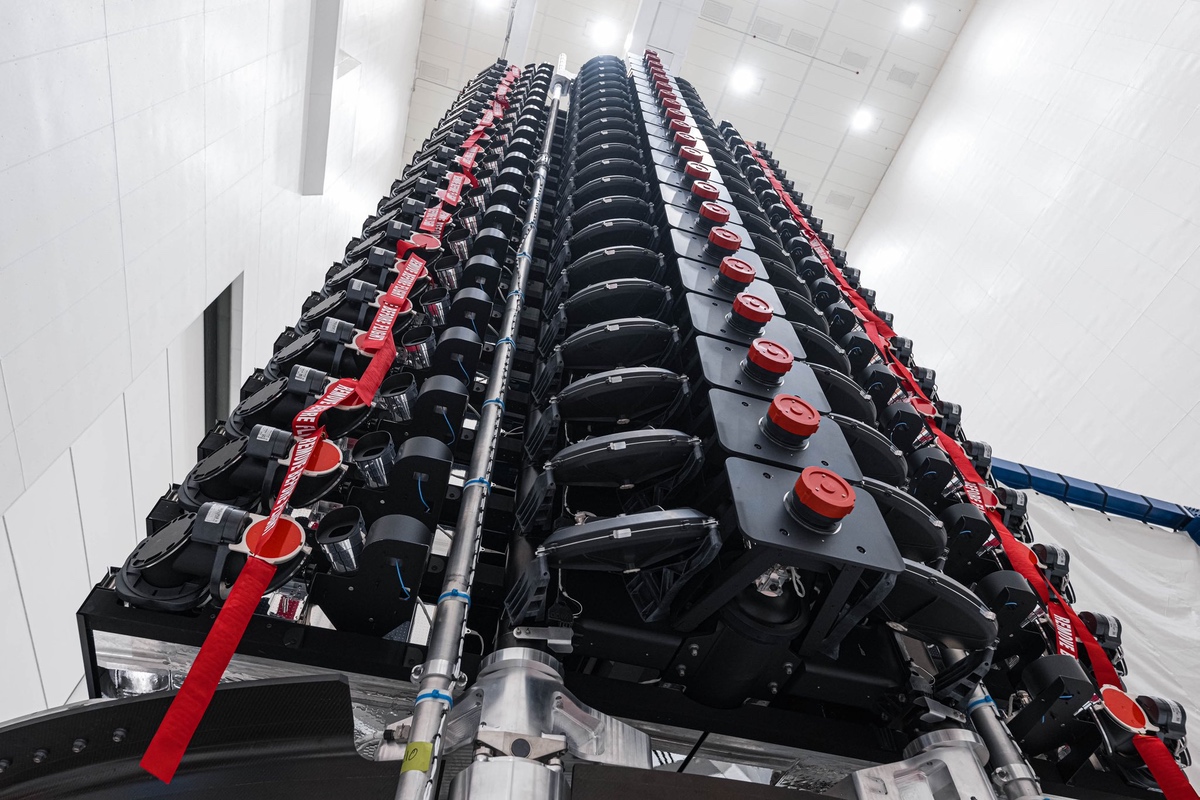BROOMFIELD, Colo. — SpaceX launched the first set of upgraded Starlink satellites for its second-generation constellation Feb. 27, featuring increased capacity and new technologies.
A Falcon 9 lifted off from Space Launch Complex 40 at Cape Canaveral Space Force Station in Florida at 6:13 p.m. Eastern. The company postponed the launch by nearly five hours because of what it called a “space weather concern” linked to a recent geomagnetic storm.
The rocket deployed its payload, a set of Starlink satellites called Group 6-1, a little more than an hour after liftoff, following a second burn by the rocket’s upper stage to place them into orbit at altitudes of 365 to 372 kilometers. The rocket’s booster, on its third flight, landed on a droneship in the Atlantic Ocean.
First Starlink v2 satellites reach orbit pic.twitter.com/0l08568mJ9
— Elon Musk (@elonmusk) February 28, 2023The 21 satellites of Group 6-1 were the first of what SpaceX called the “V2 Mini” version of the Starlink satellite. The spacecraft are significantly larger and more powerful than the first-generation Starlink satellites, but smaller than the full-scale second-generation Starlink satellites that will launch on SpaceX’s Starship vehicle.
“They represent a step forward in Starlink capability,” SpaceX tweeted Feb. 26 in a brief thread describing the V2 Mini spacecraft. That includes improved phased-array antennas and the use of E-band frequencies for backhaul that the company says provides four times the capacity of first-generation satellites.
The V2 Mini satellites also have new Hall effect thrusters that use argon, rather than krypton, as propellant. The thrusters produce 170 millinewtons of thrust using 4.2 kilowatts of power, the company stated, with a specific impulse — a measure of efficiency — of 2,500 seconds. That is 2.4 times the thrust, and 1.5 times the specific impulse, of earlier Starlink thrusters.
SpaceX’s use of krypton on its original electric thrusters was itself innovative as such thrusters had predominately used xenon, which is far more expensive. Argon, though, is far more plentiful, and less expensive, which SpaceX Chief Executive Elon Musk suggested was a reason for the change. “The transition to argon was tricky, but necessary, as krypton is too rare,” he tweeted in response to a comment by Tom Mueller, a former vice president of propulsion at SpaceX.

SpaceX did not disclose the size or mass of the V2 Mini satellites. However, in a filing with the Federal Communications Commission as part of its license application for its second-generation constellation, it listed an “F9-2” design of the satellite with two solar arrays 12.8 meters long and a mass of 800 kilograms, consistent with the V2 Mini. First-generation Starlink satellites, by comparison, had a single solar array eight meters long and weighed about 300 kilograms.
The larger size of the V2 Mini has raised worries among astronomers they may be brighter and cause more interference with their observations. SpaceX said in a document that the new satellites will incorporate technologies such as dielectric mirror film to reflect sunlight away from the Earth and low-reflectivity black paint.
“So, while our V2 Mini satellites are larger than earlier versions, we’re still expecting them to be as dark or darker once the full range of mitigations are implemented and the satellites reach their operational orbit,” the company wrote.
While the Group 6-1 satellites are arguably the first second-generation Starlink satellites, they are not the first satellites for its second-generation, or Gen2, constellation that was partially authorized by the FCC in December. The company has performed four Group 5 launches from late December through Feb. 12, each carrying more than 50 satellites for orbits authorized for the Gen2 constellation. Those satellites are likely the “F9-1” design mentioned in its FCC filing, effectively identical to the first-generation satellites.
The full-fledged second-generation satellites are far larger, weighing about 2,000 kilograms with solar arrays 20 meters long, as described by the company in that FCC filing. SpaceX will use Starship to launch those satellites.
“We have a few that are waiting very patiently to be launched on Starship,” Gary Henry, senior advisor for national security space solutions at SpaceX, said of those larger second-generation Starlink satellites in a Feb. 21 panel discussion at the Space Mobility conference.
Related
ncG1vNJzZmiroJawprrEsKpnm5%2BifLS8wJycsWWclsKvr8eeqmaemafAtXnUqZ6rmZSasW6%2F05qppaGeoHq0rdOeo6WhpJrAcA%3D%3D